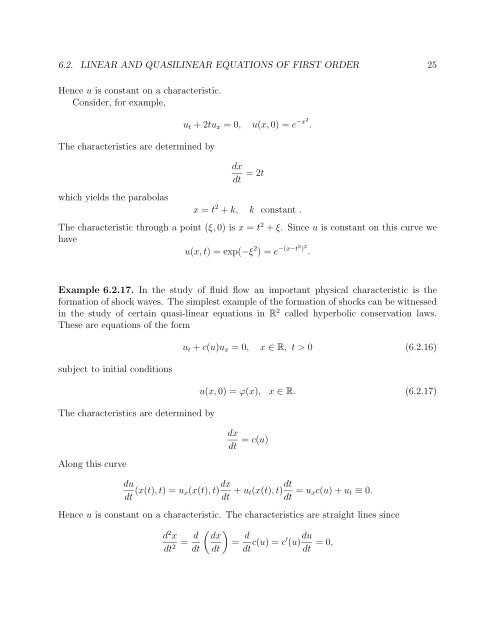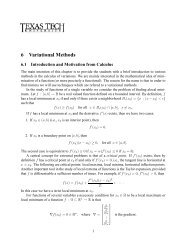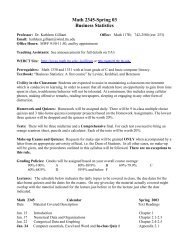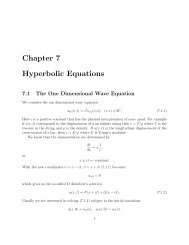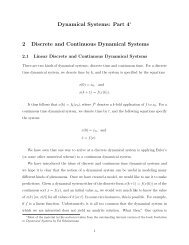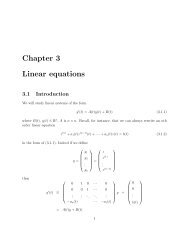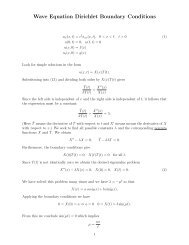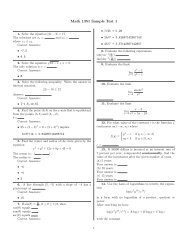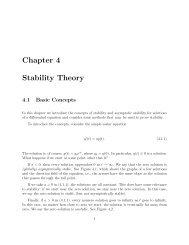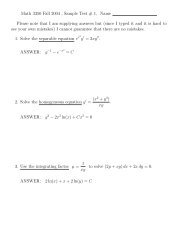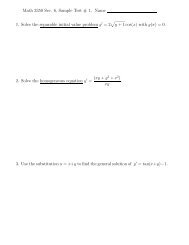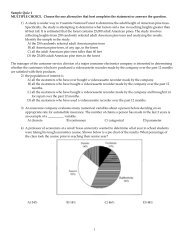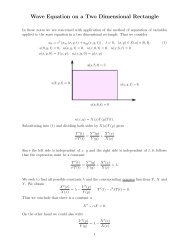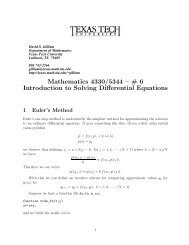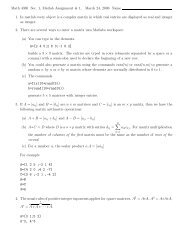Chapter 6 Partial Differential Equations
Chapter 6 Partial Differential Equations
Chapter 6 Partial Differential Equations
You also want an ePaper? Increase the reach of your titles
YUMPU automatically turns print PDFs into web optimized ePapers that Google loves.
6.2. LINEAR AND QUASILINEAR EQUATIONS OF FIRST ORDER 25<br />
Hence u is constant on a characteristic.<br />
Consider, for example,<br />
The characteristics are determined by<br />
which yields the parabolas<br />
u t +2tu x =0, u(x, 0) = e −x2 .<br />
dx<br />
dt =2t<br />
x = t 2 + k, k constant .<br />
The characteristic through a point (ξ,0) is x = t 2 + ξ. Since u is constant on this curve we<br />
have<br />
u(x, t) = exp(−ξ 2 )=e −(x−t2 ) 2 .<br />
Example 6.2.17. In the study of fluid flow an important physical characteristic is the<br />
formation of shock waves. The simplest example of the formation of shocks can be witnessed<br />
in the study of certain quasi-linear equations in R 2 called hyperbolic conservation laws.<br />
These are equations of the form<br />
subject to initial conditions<br />
The characteristics are determined by<br />
Along this curve<br />
u t + c(u)u x =0, x ∈ R, t>0 (6.2.16)<br />
u(x, 0) = ϕ(x), x ∈ R. (6.2.17)<br />
dx<br />
dt = c(u)<br />
du<br />
dt (x(t),t)=u x(x(t),t) dx<br />
dt + u t(x(t),t) dt<br />
dt = u xc(u)+u t ≡ 0.<br />
Hence u is constant on a characteristic. The characteristics are straight lines since<br />
d 2 x<br />
dt 2<br />
= d dt<br />
( ) dx<br />
= d dt dt c(u) =c′ (u) du<br />
dt =0,


